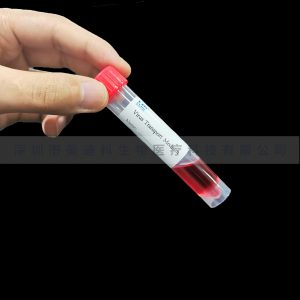If we gonna know what is the exactly use of DNA/RNA extraction kits,we need to know the principle of DNA/RNA extraction.
DNA extraction is divided into three basic steps, and the specific methods of each step can be different according to the types of samples, substances affecting extraction and subsequent steps.
1. Crushing cells by grinding or ultrasound, and removing membrane lipid by adding detergent. 2. Adding protease, precipitating with acetate, or extracting with phenol/chloroform to remove intracellular proteins, such as histones combined with DNA. 3. Precipitate DNA in cold ethanol or isopropanol, because DNA is insoluble in alcohol and sticks together. This step can also remove salt. इसके साथ ही, there are commercial kits for extracting DNA by adsorption column.
What’s the use of DNA/RNA extraction kits?नमूना संग्रह के लिए उपयोग किया जाता है, परिवहन और भंडारण.
DNA/RNA extraction kits’ लाभ: 1. flocking swab virus has high discretion, ensuring the accuracy of detection results. 2. नमूने में अच्छी सीलिंग संपत्ति है, which ensures the safety of product transportation and preservation. 3. उत्पाद निर्देश मैनुअल और उत्पाद प्रमाणपत्र.
Product details of DNA/RNA extraction kits: 1. The product package includes primary-secondary virus sampling tube (संरक्षण समाधान सहित), self-sealing bag, sampling swab and instruction manual. 2. Product specification: 100 सेट / बॉक्स, 8 बक्से / बॉक्स 3. उत्पाद - भार: 0. 65kg/ box, 13. 2kg/ box 3. पैकिंग आकार: 25. 5*23. 5*14. 5 बक्से, 53*49*32/ डिब्बा
Scope of application of DNA/RNA extraction kits: Returning to work detection, optimization of large-scale crowd screening Product features of DNA/RNA extraction kits: 1. transport at normal temperature and stably preserve virus RNA 2. Pre-packaging guanidine salt lysate can inactivate SARS-CoV-2 and ensure the safety of transportation and inspection personnel 3. Large-capacity preservation solution can fully soak the swab head, and the sample size can be divided into three parts for detection and sample retention, meeting the detection requirements.

सैंपलिंग ट्यूब















 सैंपलिंग ट्यूब
सैंपलिंग ट्यूब

